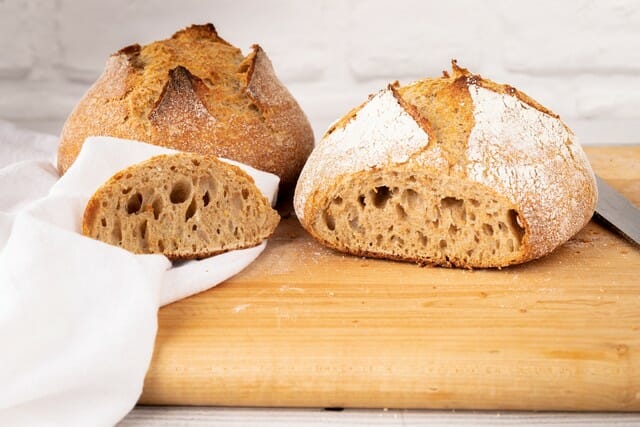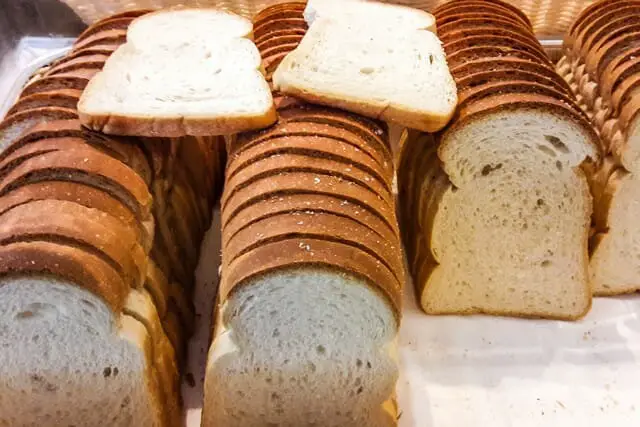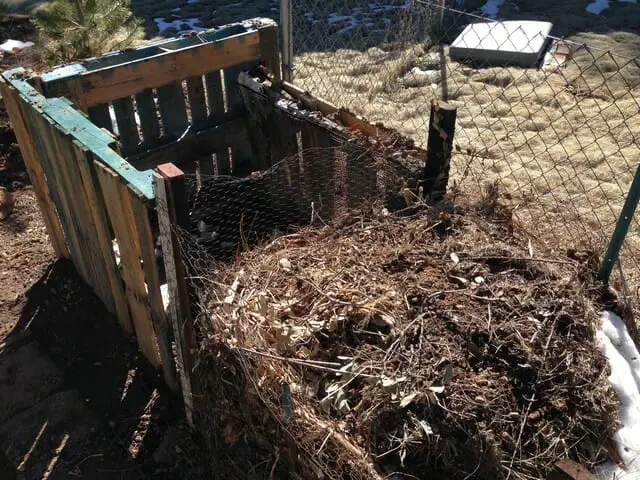Last Updated on January 14, 2022 by Grow with Bovees
Adding compost is an excellent way to improve the texture of the sand and clay in your garden soil and it also helps to add microorganisms that produce nutrients for the plants. According to the National Resources Defense Council, around 40% of the food purchased by households is thrown away and sent to landfills.
Often, while composting, people wonder if they can add bread to the compost bin or should it be left out completely. The answer to this is like a lot of other kitchen waste, bread too, is organic and can be composted. Bread decomposes very quickly and adds a source of nitrogen to the compost.
However, food scraps like bread can also attract insects and pests and whether you want to compost bread or not depends entirely on your process of composting.

Some methods of composting are better suited to dealing with bread and other food scraps than others and, with sufficient preparation, there is no reason why you should leave out bread and other foods from your composting routine.
Why Compost Bread
Bread like all other foodstuff is also organic and can be added to the compost pile. If you throw away bread regularly, then you might as well use it for compost. Bread will not retard the composting process, nor will it create an imbalance of the compost like some larder items such as dairy products.
Also, bread breaks up rather quickly and when exposed to moisture, it falls apart completely, especially if it is already in pieces.
Why Not Put Bread into Your Compost Bin?
The main reason against using bread as a compost material is its potential to attract pests, rodents, and insects to the compost area. However, there are ways in which you can prevent these pests from attacking your compost heap. With a bit of preparation and consideration, composting bread need not cause you so much anxiety.
Using a compost bin with a lid can prevent pests from getting into your compost pile. And, even if the bin is kept open, just ensure that the pieces of bread and other small pieces of leftover menu items are covered well. This will help to prevent the pest problem.
Storing Bread and Other Compostable Food Scraps

Every time you have leftover bread and don’t want to run over to throw it into the compost pile, then you can simply break the bread into smaller pieces and store them until you make a trip to the compost pile. Breaking the bread into smaller pieces will also help to hasten the decomposition process once you put the bread into the compost bin.
You can store the bread pieces in the refrigerator, or you can store all the kitchen waste meant for composting in a pail or caddy until you take it all to the compost pile. However, you must take care of the odors, which can potentially become rather unpleasant. Look for a bin or caddy that can be washed easily and has charcoal filters to prevent unpleasant odors.
Or, you can place a countertop compost crock or bin in your kitchen to collect unwanted items. To prevent flies and odors, you can place a 2nd bucket filled with sawdust or finished compost and sprinkle some onto the waste to keep it covered.
How to Add Bread into the Compost Pile

- Break up the Bread: Break up the bread into smaller pieces before adding it to the compost pile. This will help the bread to decompose faster and also prevent pests and animals from being attracted to the pile.
- Place it in the Center: Place the food scraps and bread in the center of the compost pile. Most of the heat is generated at the center, which helps to speed up the decomposition and it also prevents it from being found by pests and animals easily.
- Cover It Up: Use materials like dry leaves or sawdust that are high in carbon to cover the bread. Balancing the mix of nitrogen and carbon organic matter in the compost pile makes the decomposition process more efficient.
- Speed up the Decomposition: Adding manure, garden soil or finished compost to the bread and food scraps can help them to decompose more quickly.
- Replace the Compost: Cover the hole that you dug to put the bread and food scraps with compost. This helps to hide the bread and food from the lurking pests, rodents, or other animals.
- Keep the pile aerated: Make sure to introduce plenty of oxygen using a composter aerator.
Can Moldy Bread Be Composted?
Yes, you can throw moldy bread in the compost.
The best type of bread to compost is moldy bread. The mold on the bread indicates that the process of decomposition has already started and adding the moldy bread to your compost pile can help to quicken the composting process.
Can I Compost Stale Bread?
Stale bread is great for throwing in the compost heap. In fact, any type of bread that you’re not going to consume yourself is sure to be a great treat for the microorganisms in the compost.
Is Bread Green or Brown Compost?

Often, there is confusion about whether bread belongs to the green category or brown category while composting. Green materials essentially have high nitrogen content, while brown materials are high in carbon. And, for good composting, the correct balance of both is necessary.
Sometimes grains and bread are put under the brown category. This may be because bread is brown in color or it is good for drawing moisture out of other food stuff like fruits, vegetables, etc. However, green materials need not be green in color and in fact, coffee grounds are considered to be green material.
If there happens to be any toast leftover from a breakfast of eggs on toast, you can compost both the eggshells and the old toast, as well as any used paper coffee filters, that’s recycling!
Bread has high nitrogen content, which puts it into the green materials category. This is important for you to know because the nitrogen to carbon-producing materials ratio in the compost pile is important for how well the composting process proceeds.
Only 1/3rd of the compost should comprise green materials and knowing which category bread is, can actually help you keep the ratio correct.
The Conclusion Of Can You Compost Bread
In conclusion, you can compost bread just like other types of unused edibles, including things like citrus peels. However, when you do, you need to pay greater attention. The pile should be turned regularly using your choice of composting tools, and aerated to prevent foul, smelly odors.
Adding sufficient brown materials will help to maintain the healthy balance of the compost and, finally, perform all the steps that we have discussed above to prevent pests from reaching the bread.
Once you take care of all these things, you can safely compost baked goods and bread just as you would grass clippings and other materials. If you can’t wait for your compost to finish the process, you can get hold of some bagged compost from your local big-box store or online.
While we’re on the subject of baking, when you buy your wax paper, be sure to buy the compostable wax paper type. They are not all suitable for composting, but some are.
Food waste and the greenhouse gases generated are the largest components of landfills. Composting helps to reduce the amount of waste that goes into the landfill. So, composting is a boon both to your garden, and the environment, and now you know the answer to “can you compost bread?”. We feel sure you will continue to put bread in compost.
